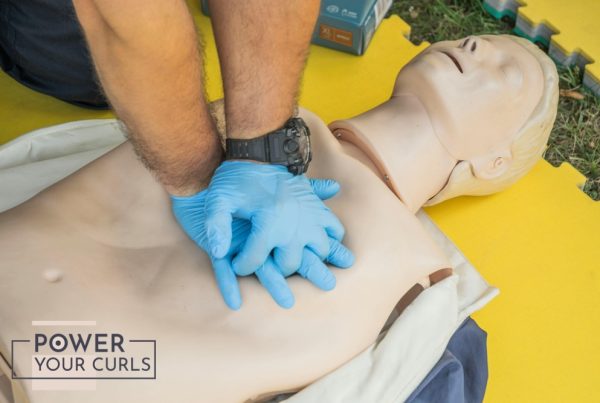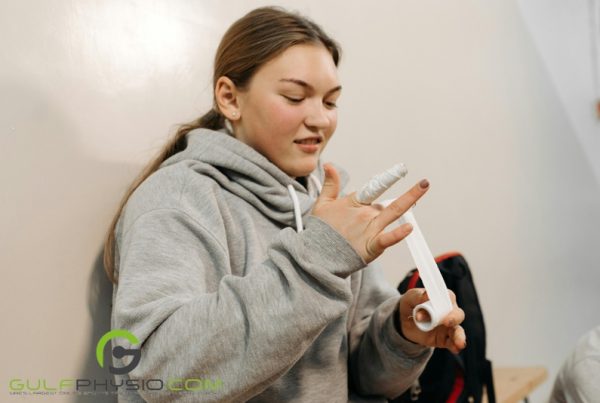Gauze? Elastic? Compression? Which should you choose? Simple things like the humble bandage have so many different names and variations that it can be confusing to choose which one you need. So we decided to write this article to help you navigate the surprisingly confusing world of bandages.
We do not precisely know the date of the invention of the first bandage, but modern historians believe that the ancient Egyptians were the first to use something that resembles modern-day medical wraps. They made use of strips of cloth, wrapping these strips around wounds dressed with honey to prevent infections. From there, the simple act of dressing and wrapping open wounds to prevent infections have evolved together with advancements in medicine and medical technology. Today we have multiple different kinds of bandages for different needs, and we’re going to go over them (and their different names!) to help you understand which ones fit your needs!
- Gauze Bandages (Also known as Crepe Bandages or Roller Bandages)
The most common type of bandages. These come in multiple different sizes and thicknesses to fit specific needs. Companies make Gauze bandages out of woven cotton, making them flexible and breathable, this is why they are oftentimes used to support sprains and strains. They also provide compression and immobilization to injured areas and are also used to hold dressings in place. Another advantage gauze bandages have is that they are washable and reusable.
(You can get Gauze Bandages here on GulfPhysio.com) - Compression Bandages (Also known as Elastic Bandages, Ace Bandages, and Tensor Bandages)
Compression bandages are elastic and made out of a stretchable cloth. This makes them ideal for providing support for soft tissue injuries such as contusions and tendonitis. Compression bandages also come in two kinds:
A. Short-stretch compression bandages
Short-stretch compression bandages are often used for lymphedema and venous ulcers, providing a secure, comfortable solution. They shrink around the limb, preventing resting pressure buildup. When delivered through internal muscle contraction and joint movement, they generate strong resistance to stretching. Although limited in extensibility, they offer strong resistance to muscular contraction and external movement.
B. Long-stretch compression bandages
Long-stretch compression bandages offer high compressive power and can be easily adjusted. However, they have high resting pressure and require removal at night or during resting positions. These bandages are used to relieve and support muscles, ligaments, and tendons, and are suitable for holding dressings and splints, providing mild compression, and supporting strains and sprains.
( Get your compression bandages here on GulfPhysio.com) - Triangular Bandages (Also known as Cravat Bandages)
A triangular bandage, also known as a cravat bandage, is a multi-purpose cloth in the shape of a right-angled triangle. It can be used unrolled as a sling, folded as a normal bandage, or for specialized applications like the head. This versatile bandage is made from fabric scraps or clothing and was popularized in first aid lessons by the Boy Scouts. Its large size and shape make it useful for applying pressure to bleeding wounds, wrapping sprains, splinting broken bones, and securing dressings. Triangular bandages are often included in field kits for survival purposes, such as filtering water. The Triangular bandage, also known as a cravat bandage, is a popular choice for its versatility and versatility. - Tubular Bandages (Also known as Tube Bandages)
A tubular bandage is an elasticated gauze bandage that provides uniform compression on arms, legs, ankles, and wrists. It is suitable for moderate compression applications like immobilizing joints, supporting joints during activity, holding dressings in place, and reducing swelling. - Cohesive bandages
A cohesive bandage is a flexible, stretchy, and lightweight strapping tape with a rubberized coating. Often incorrectly referred to as self-adhesive bandages, these bandages are best used for wrapping around a body part. It can be easily cut with scissors but can easily tear by hand. The cohesive bandage can cause constriction if applied too tightly, so remove it immediately if it causes pain, discoloration, or swelling.
( Get your compression bandages here on GulfPhysio.com) - Conforming Bandages
Conforming bandages are stretchy, lightweight, fray-resistant, and breathable bandages designed to secure dressings in place, especially on limbs. They are commonly used for dressing retention and provide relief and light compression. Made from synthetic materials, they are durable and lightweight, making them ideal for wound care applications like sprain support and dressing retention.
(Get your compression bandages here on GulfPhysio.com)
There we go! A short guide on badges, their names, and more importantly their uses. Now you know which bandages to use, and you can get them together with all your other medical needs right here on GulfPhysio.com.
Disclaimer: GulfPhysio.com and all of its content are for informational purposes only. All information is believed to be accurate at the time of posting and should NOT be construed as professional medical advice. Please seek a medical professional in the event of pain or injury.



